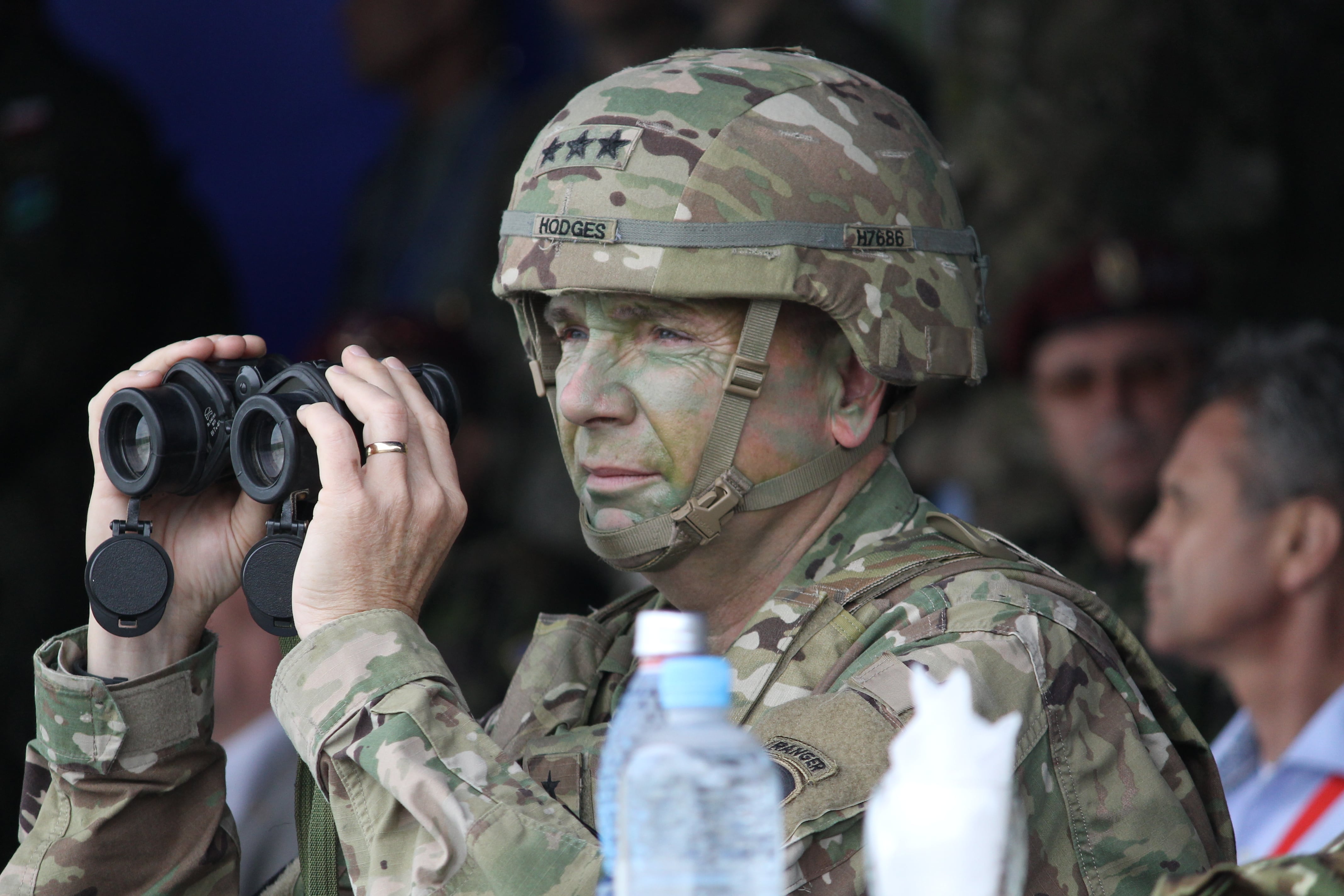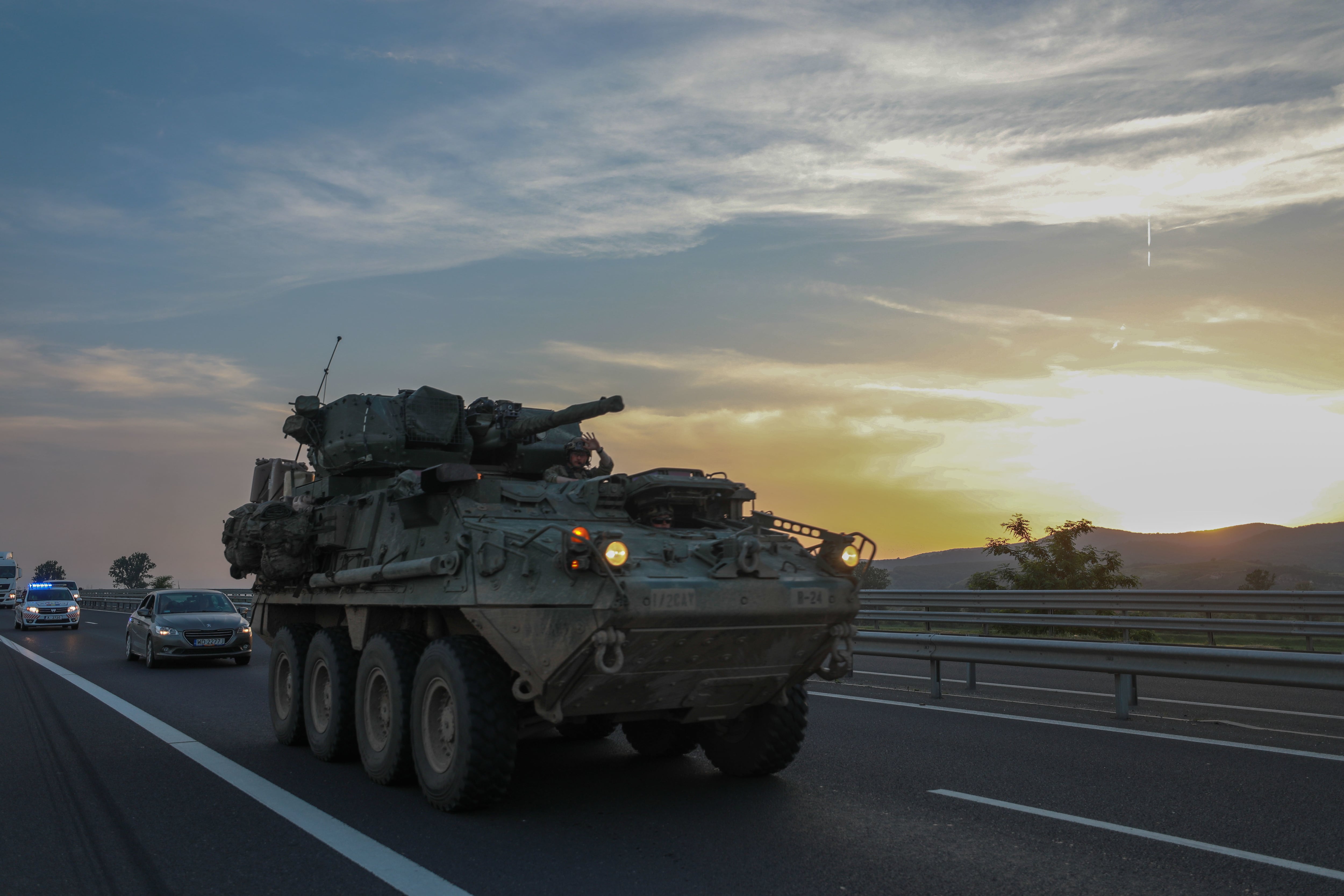WASHINGTON — The Defender 2020 in Europe is set to be the third-largest military exercise on the continent since the Cold War, according to Lt. Gen. Chris Cavoli, the U.S. Army Europe commander.
The division-scaled exercise will test the Army’s ability to deliver a force from “fort in the United States to port in the United States,” and then to ports in Europe, and from there to operational areas throughout Europe from Germany to Poland to the Baltic states and other Eastern European nations, Nordic countries and even Georgia, Cavoli told Defense News in an exclusive interview focused on the big event.
While the Army has gone into some detail about Defender 2020 in the Pacific, U.S. Army Europe has been tight-lipped during the coordination of its version.
While the drill has been compared to the Reforger exercises that happened during the Cold War, that is “not a completely apt comparison” because Reforger exercises were about getting a force into one country — Germany — “to defend a very-known location against a force that we all understood very well,” Cavoli said. He recalled hearing about Reforger exercises as a little boy when his father was an Army officer serving in Europe. “The only thing we didn’t know was what time it was going to happen.”
This time, the Army must deploy a huge force onto the continent, move across and operate in many countries, “and we don’t know what we’ll have to deter or even defend against,” he said.
At a massive scale
Testing the Army’s ability to deploy large units to Europe is seen as critical to deterring Russian aggression. The Army has increasingly turned its posture to stationing most of its combat forces in the United States while maintaining theater operational capability and equipment set aside for rapid reinforcement from the U.S.
The service has begun rotating forces on a regular basis over the past several years after beginning to withdraw capability from Europe. After Russia annexed Crimea in 2014, the U.S. began to invest in a buildup in Europe to deter Russia from acting similarly in another country. That included sending an armored brigade combat team on nine-month, back-to-back rotations as well as a combat aviation brigade.
“But to do this with a large force at scale” — roughly 20,000 soldiers with heavy equipment — “is a very big deal for us. So what it’s going to do is really exercise the Army and our joint systems to deliver that force,” Cavoli said.
The exercise so far has 18 countries participating as well as NATO forces and will also have a large participation from the Army National Guard and the Army Reserve from 11 states and seven reserve units.
The Army has been exercising similar deployments from the continental United States to Europe for major exercises like Saber Guardian, but those have been focused at the tactical level. Defender will put strategic readiness to the test.
“When these guys get over here, I think the opportunities that we’re going to see are really about throughput,” Cavoli said. “How do you receive a unit this large and efficiently” and transport people and equipment using transportation capability from rail to barges.
Moving thousands of troops and equipment requires good infrastructure across country lines as well as effective coordination and host nation support, according to Cavoli. The exercise will “allow each of our allies to practice hosting a force,” he said.
RELATED

For example, in Saber Guardian, the Hungarians set up a national movement control cell that helped coordinate the large-scale movements through the country.
A few years ago, Germany established a joint support and enabling command that serves as a throughput command to get people across Europe for operations. The command will get a chance to operate at a much larger scale this time.
Similar investments are expected for Defender, which are critical for establishing effective and rapid freedom of maneuver so troops can get where they need to be as fast as possible if a crisis arose.
The exercise will incorporate a variety of regular exercises conducted in Europe — roughly eight to 10 — including the Army’s Joint Warfighting Assessment 2020.
JWA will involve forces at Grafenwoehr training area in Germany and other distributed locations.
Operating across domains
To Army will also have a chance to evaluate its emerging Multi-Domain Operations concept as the service transitions it to doctrine. At the JWA, headquarters at the highest command as well as subordinate corps, both NATO and multinational corps, and, below that, a tactical unit — the 1st Cavalry Division — will participate in war games to see what it’s like to fight with the Army’s planned modernization priority capabilities such as long-range precision fires.
“We’re going to apply the concepts of Multi-Domain Operations in a war game, a simulation. We are going to give ourselves all of the things the Army is developing,” and figure out what works and what should be modified, Cavoli said.
But other exercises will include MDO concepts such as a massive division-minus-sized wet gap crossing at Drawsko Pomorskie training site in Poland.
“When we look at large mobile armored warfare, one of the most difficult operations and complex operations and operations where a force is vulnerable is a wet gap crossing,” Cavoli said. “So that’s a place where we really think some of the principles of Multi-Domain Operations are going to be able to help us reduce vulnerabilities and generate speed so that we can cross obstacles better.”
Additionally, Defender will incorporate joint forcible entry exercises to include three parachute assaults in various locations, and the MDO concept will come into play with those as well, he added.
While the Army’s European-based Multidomain Task Force won’t be fully established by Defender 2020, the service plans to take the parts of it that are available and use surrogates from other parts of the Army to help rehearse during the JWA.
“It’s going to allow me to figure out how I want to employ it in this theater and how we want to shape it exactly,” Cavoli said.
Additionally, the Army will practice pulling out its Army Prepositioned Stock and exercising it as part of Defender, Cavoli noted.
“We’ve done this at smaller scales,” he said, over the last couple of years, including a no-notice deployment of two battalions and a brigade headquarters from Fort Bliss, Texas, who drew on two battalions worth of equipment from stock in Europe.
This time the Army will practice drawing equipment and using it in live-fire exercises at the brigade level and higher. Part of that effort will include pulling Abrams tanks with their new Trophy active protection systems for the first time from that pre-positioned equipment and then exercise the capability.
Defender, in its entirety, will run from roughly February, when mobilization begins, through June. The lump sum of the major exercises will take place in April and May.
Defender is “a very big deal,” Cavoli said, because it will show that the U.S., its allies and its partners have the ability to deter conflict on the continent by rapidly introducing a massive ground force and projecting across key territory.
Jen Judson is an award-winning journalist covering land warfare for Defense News. She has also worked for Politico and Inside Defense. She holds a Master of Science degree in journalism from Boston University and a Bachelor of Arts degree from Kenyon College.




